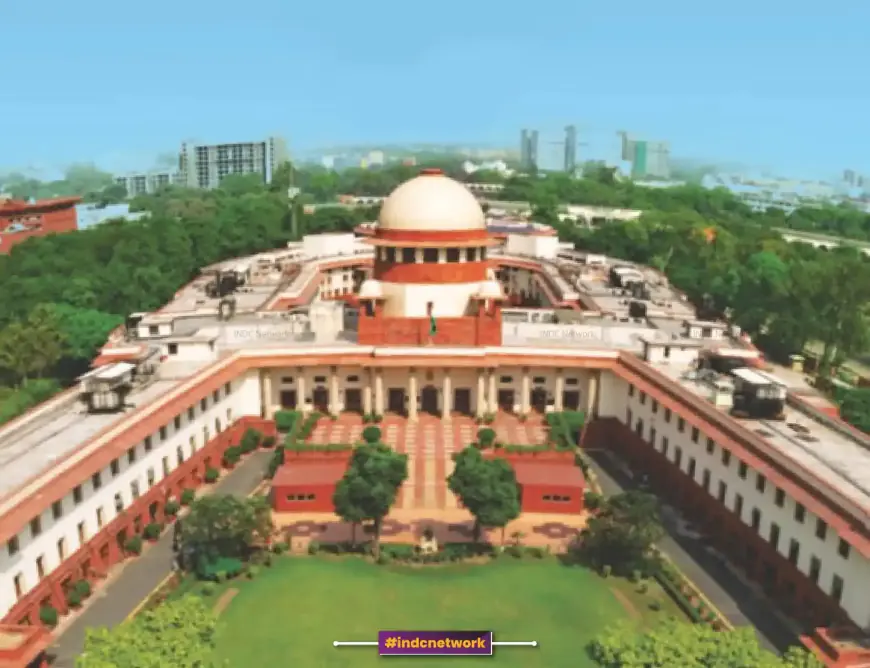The “Proposed Judgment”: A Glimpse into Judicial Tensions
The recent deliberations of the Supreme Court’s nine-judge Bench, led by Chief Justice D.Y. Chandrachud, unveiled an unexpected debate on judicial commentary and respect for past judgments. The issue came to light when two judges, Justices B.V. Nagarathna and Sudhanshu Dhulia, referenced a “proposed judgment” circulated within the Bench that contained a strong critique of the “Krishna Iyer Doctrine.” Known for its humanistic values and the maxim “bail is the rule, jail is the exception,” the doctrine of Justice V.R. Krishna Iyer has had a lasting impact on India’s legal philosophy, especially in criminal justice reform.
The Chief Justice’s “proposed judgment” allegedly observed that the Krishna Iyer Doctrine did a “disservice to the broad and flexible spirit of the Constitution.” Although this remark was excluded in the final judgment, it nevertheless prompted Justices Nagarathna and Dhulia to reflect on the significance of honoring the legacies of previous judges. Both judges underscored the foundational role of Justice Iyer’s values and philosophies, which have guided India’s legal landscape in times of economic and social upheaval. The unusual decision by Justices Nagarathna and Dhulia to reference a “proposed” version of the judgment reflects the profound impact of the Chief Justice’s initial comments.
A Divided Opinion on Respecting Judicial Legacy
Justice Nagarathna, in her separate opinion, cautioned against dismissing the contributions of past judges based solely on contemporary economic and political realities. Her response pointed out that judges of past generations, like Justice Iyer, served during a different socio-economic era. Iyer’s approach, she argued, was reflective of the nation’s post-independence ethos, a time when public welfare and socialist principles were prioritized over individual gain. Dismissing past doctrines, she warned, could risk overshadowing the significance of history’s valuable lessons.
Echoing a similar sentiment, Justice Dhulia expressed that the critique of Justice Iyer’s doctrine was “harsh” and avoidable. His opinion celebrated Justice Iyer’s humanistic principles, emphasizing their importance for “those who have anything to do with law or life.” Dhulia reminded readers that Iyer and his contemporaries’ doctrines were built on strong ideals of fairness and equity, driven by empathy for the human condition. Recalling a memorable statement from Justice Iyer, Dhulia noted, “The courts too have a constituency — the nation — and a manifesto — the Constitution.”
Balancing Modern Economic Policies with Historical Wisdom
The discussion around Justice Iyer’s philosophy also brought into focus the broader issue of economic policies and their influence on judicial principles. In the final judgment, the Chief Justice ultimately chose to clarify that the court must avoid encroaching on economic policy, marking a cautious shift in the court’s stance on judicial activism. Justice Nagarathna, however, warned against disregarding past doctrines due to the post-1991 liberalization and globalization era. She argued that this paradigm shift should not undermine the contributions of those who served before, as each generation of judges reflects the prevailing socio-economic and political climate.
In calling for selective adaptation, Nagarathna pointed out that the Supreme Court, as an institution, is much larger than any individual judge. The value of past doctrines lies not in rigid application but in a discerning approach that allows the judiciary to adapt while honoring its history. Justice Dhulia’s reminder that “the Krishna Iyer Doctrine has illuminated our path in dark times” reinforces this notion, urging today’s judges to appreciate the enduring influence of such doctrines while evolving to meet contemporary challenges.
This unusual judicial exchange highlights the complexity of balancing progress with respect for judicial legacy, a challenge that India’s judiciary will likely continue to navigate in the years ahead.










